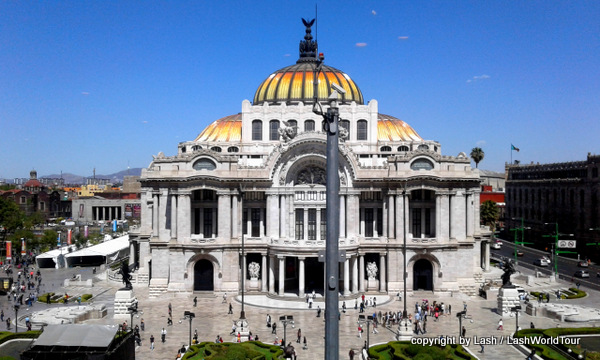
Palacio Bellas Artes
Introduction to Mexico City
Walking around central Mexico City feels very much like wandering around an old old European city. Everywhere you stroll past massive stone buildings with graceful architectural detailing, large open plazas, worn stone streets and large leafy parks.
In fact, essentially Mexico City is an old European city. The Spanish established it in the early 1500s, designing the city lay-out, buildings and cathedrals based on the current architecture of Spain and other European countries.
Over the following decades and centuries construction continued and architectural styles evolved along with changes in European architecture and art. As a result, today La Ciudad is a huge hodge-podge of building styles ranging from the1500s all the way through to the Art Deco phase of the 1920s and 30s, boxy designs of the 1960s and soaring modern glass & steel skyscrapers.
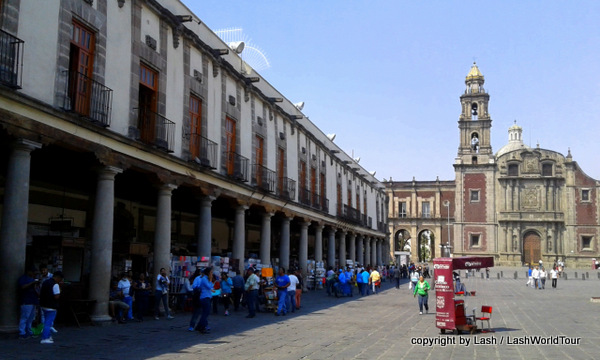
Plaza Santo Domingo with centuries-old printing shops and the Iglesia Santo Domingo
With the relatively stout historical buildings (mostly 3-6 stories only) and spacious plazas, Mexico City also feels exceedingly tranquil, laid-back and, in fact, safe. It’s quite hard to believe that any crime even exists in such a calm, peaceful, airy city.
The large police presence at most intersections, plazas, parks and major streets perhaps deters pick-pockets, assaults and other potential crimes. Whatever the reason, the city’s Centro Historico and other popular areas feel surprisingly safe.
One interesting and little-known fact about Mexico City is that it sits at the very high elevation of 2240 M / 7349 ft. That high altitude directly impacts many visitors flying in by plane, who often feel the affects of altitude sickness – exhaustion, headaches, trouble sleeping!
I personally felt completely exhausted for two full days when I flew in from Florida (altitude 0 ft), then very slowly began recovering my energy over the following days. In total, it took me one entire week to regain my normal energy and verve. Several other girls I met at my hotel also felt extremely tired.
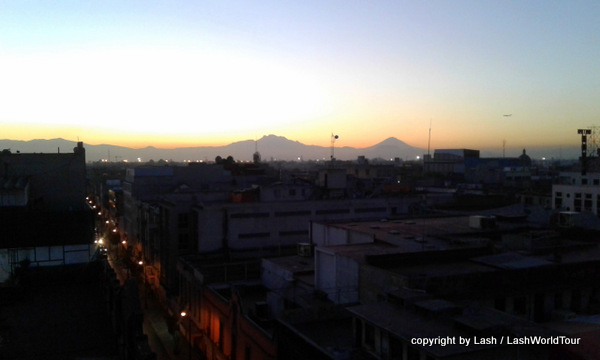
Volcanic peaks surrounding Mexico City at sunrise
In addition to the high altitude, La Ciudad suffers from fairly bad pollution. It’s situated in a vast ‘bowl’ surrounded by even higher volcanic peaks. No doubt this geographical formation traps the city’s poisonous fumes, making the situation even worse.
Central Mexico also has a very dry climate. So what with the high altitude, pollution and dry air, it’s no wonder many visitors suffer from a lack of energy and dehydration. It’s advised to take it easy the first few days after arrival, drink lots of water as well as electrolytes to prevent dehydration.
On the bright side, La Ciudad offers a mind-boggling range of cultural and artistic opportunities. Over 100 museums present all types of art, from European Renaissance through to Mexican Popular Art and modern experimental art installations.
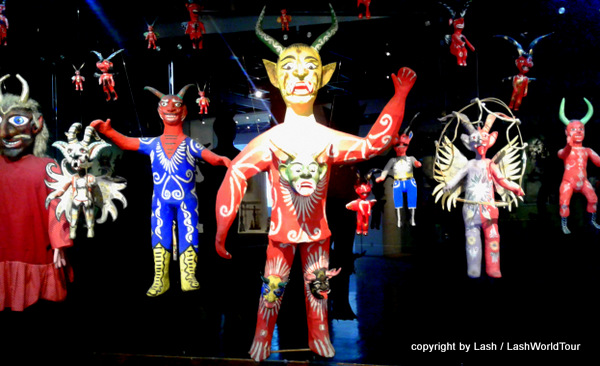
display in Museo de Arte Popular Mexico
There are also museums showcasing photography, architecture, police history, military history, Mexican history, postal services, medical history, anthropology, to name just a few. The vast National Museum of Anthropology is considered one of the best in the world.
In addition, many important government buildings house some of the country’s most important & precious artworks, such as Diego Rivera’s massive murals in the hallways of the Palacio National (which houses the presidential offices).
Thus far, my favorite museums are the Museum of Mexican Popular Art and the Palacio Bellas Artes Museum along with the Palacio’s gorgeous interior murals.
Then there are the city’s performances and dance events. Nearly every morning, afternoon and night you can choose between a divergent array of performances – music from classical and opera to Mexican rock n roll and punk. Theater shows. Latino dance halls, bars and clubs for salsa, marengue and other specific dance forms.
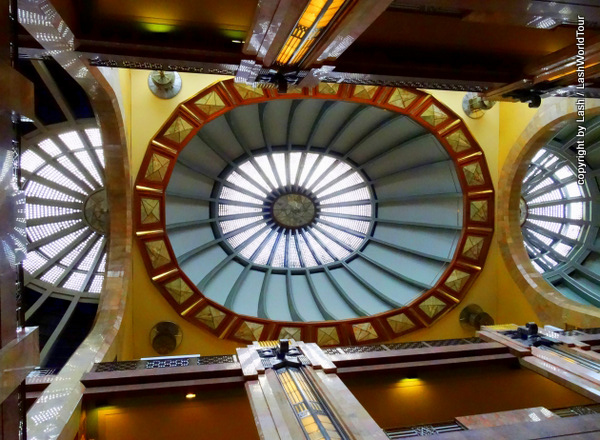
lobby ceiling of Palacio Bellas Artes
As for architecture, more than 1500 historic buildings in Centro are registered on the UNESCO World Heritage List. Many of them have incredibly elaborate architectural external detailing, interiors, hallways, courtyards, columns, ceilings, staircases and other distinctive features.
Most museums are situated in these gorgeous old buildings. So museum visits are simultaneously architectural and historic ventures.
You can also just wander into many other historic buildings to discover incredible interiors.
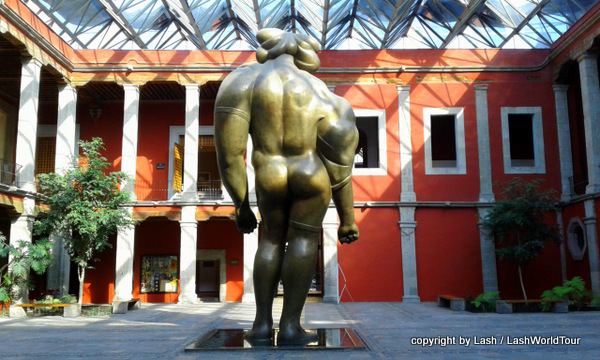
courtyard of Museo Jose Luis Cuevas and his famous La Giganta statue
Mexico City is currently (as of 2016 stats) the 12th most populous city in the world, with over 20 million residents. It’s also one of only 36 mega-cities (more than 10 million inhabitants).
Given that, it’s rather surprising that the city doesn’t feel overwhelming or intimidating or dangerous…at least in Centro Historico and particular trendy neighborhoods. Probably venturing out into non-touristed, poorer regions within the city’s massive sprawl would be an altogether different experience!
Centro Historico and nearby neighborhoods like Roma, Condesa and Polanco are also very walk-able. Flat topography, wide sidewalks, plazas, parks and the extensive police presence make walking very manageable. It’s also a fantastic way to view all the gorgeous, varying architecture.
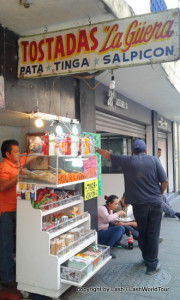
street stall in Centro Historico
Eating is also incredibly easy and cheap. Nearly every block in Centro historico has at least 1-3 little local Mexican eateries serving up a huge variety of traditional foods. Many varieties of tacos, tamales, tostados, enchiladas and other delicacies are generally just a few minutes away.
And the bakeries! La Ciudad has the largest bakeries I’ve ever seen in the world. Happily, their selection of breads, cookies, cakes and pastries are very tasty, well-made and cheap.
La Ciudad has an excellent and extensive subway system, for traveling longer distances. In fact, it’s one of the world’s largest, with 12 lines, 175 stations, over 200 miles of tracks and over 4 million passengers per day. The Metro, as it’s called, is also the world’s least expensive subways at just 5 pesos / 25 cents US per ride.
To compliment the subway, there’s an equally extensive Metro bus system with linked stations. Between the two, it’s quite easy and fast to get around the whole metropolitan city.
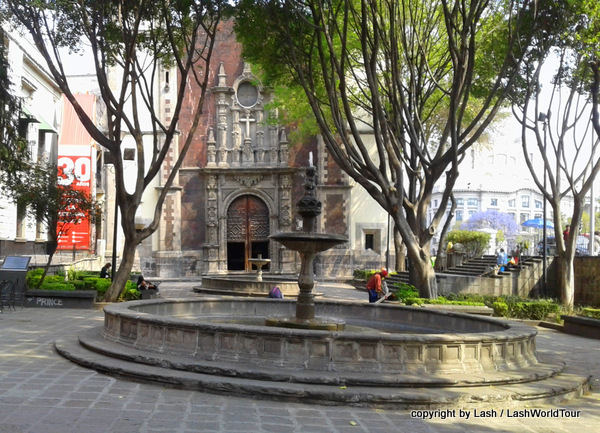
drastically sunken and tilted plaza of Santo Veracruz
Perhaps the most surprising and bizarre feature of La Ciudad is that the entire city is sinking! And sinking quite unevenly. Many buildings are visibly tilted to one direction or the other. Others curve in waves, dipping down and back up again. Some streets, plazas and sidewalks also dip down for short distances.
In the past 100 years, the city has sunk 10 M / 33 ft. And the problem is getting worse as the population grows, more buildings are added and the massive population is draining nearby aquifers for water use.
Overall I’ve been very impressed with La Ciudad de Mexico. It’s a paradise for art, museum and architecture nuts, like me. I found it absolutely wonderful being able to eat so easily and cheaply (as anyone who knows me will completely understand). And it’s equally nice to feel safe and tranquil in a city that’s usually portrayed as extremely dangerous.
To be honest, for architecture in Mexican cities, I actually like Puebla better. But you cannot beat Mexico City for museums, that’s for sure!
In total, it will take me at least two weeks to experience everything I want to in La Ciudad.
I highly recommend Mexico’s capital city to other travelers, especially those who love museums, art, architecture, performances, city parks and street food.
===========================
You might also enjoy:
9 Surprising Facts About Mexico City
Photos of Stunning Yucatan Peninsula
My Best Photo Galleries of 2016
=========================================








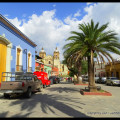

 Hi! I'm Lash, an American nomadic world traveler who's been traveling solo since 1998. I’m passionate about traveling the world nomadically and then sharing it all with you. I hope to inspire you to travel the world, to entertain you with tales from the road, and to help you reach your travel dreams. Welcome!
Hi! I'm Lash, an American nomadic world traveler who's been traveling solo since 1998. I’m passionate about traveling the world nomadically and then sharing it all with you. I hope to inspire you to travel the world, to entertain you with tales from the road, and to help you reach your travel dreams. Welcome! 




4 pings